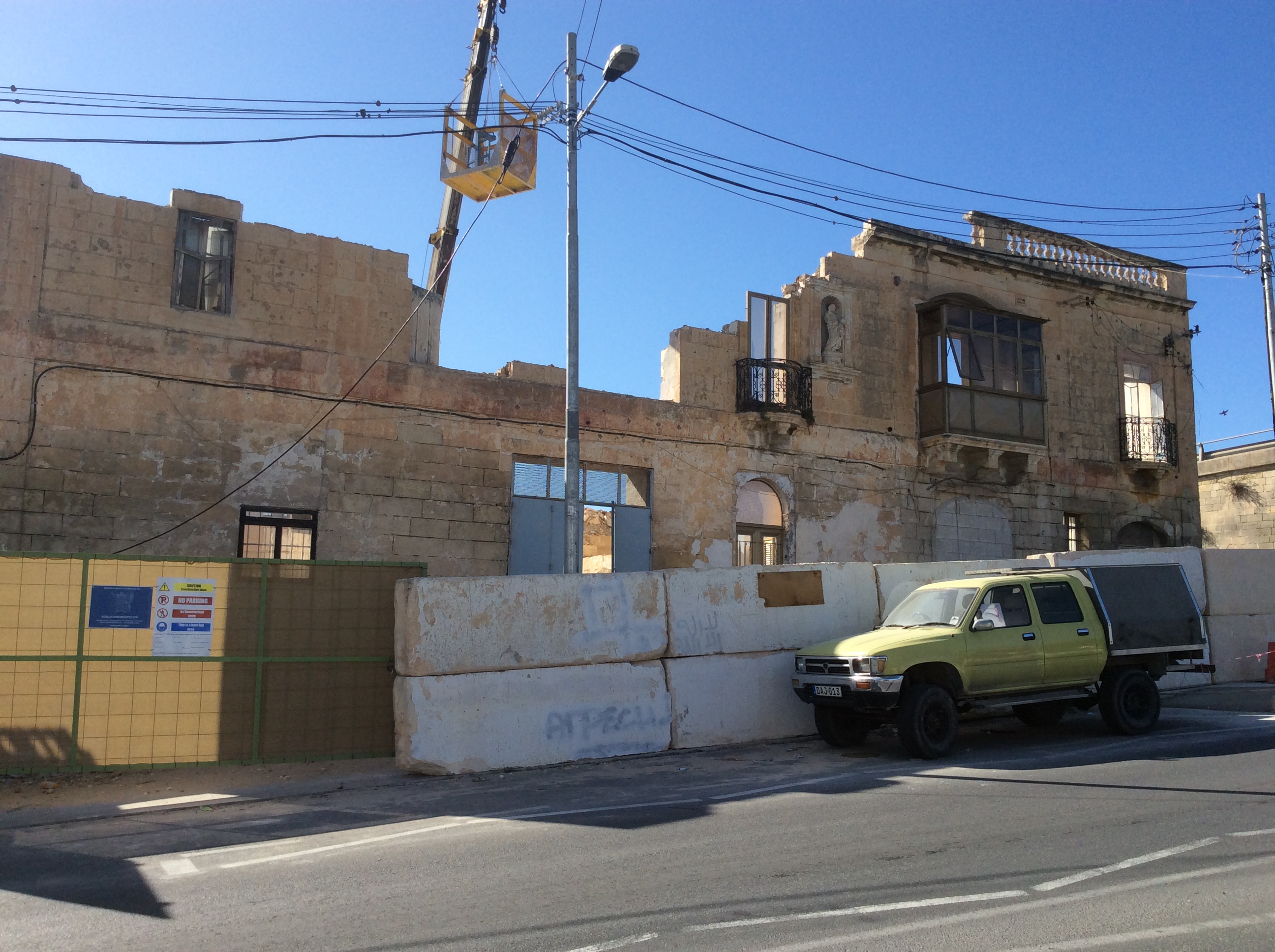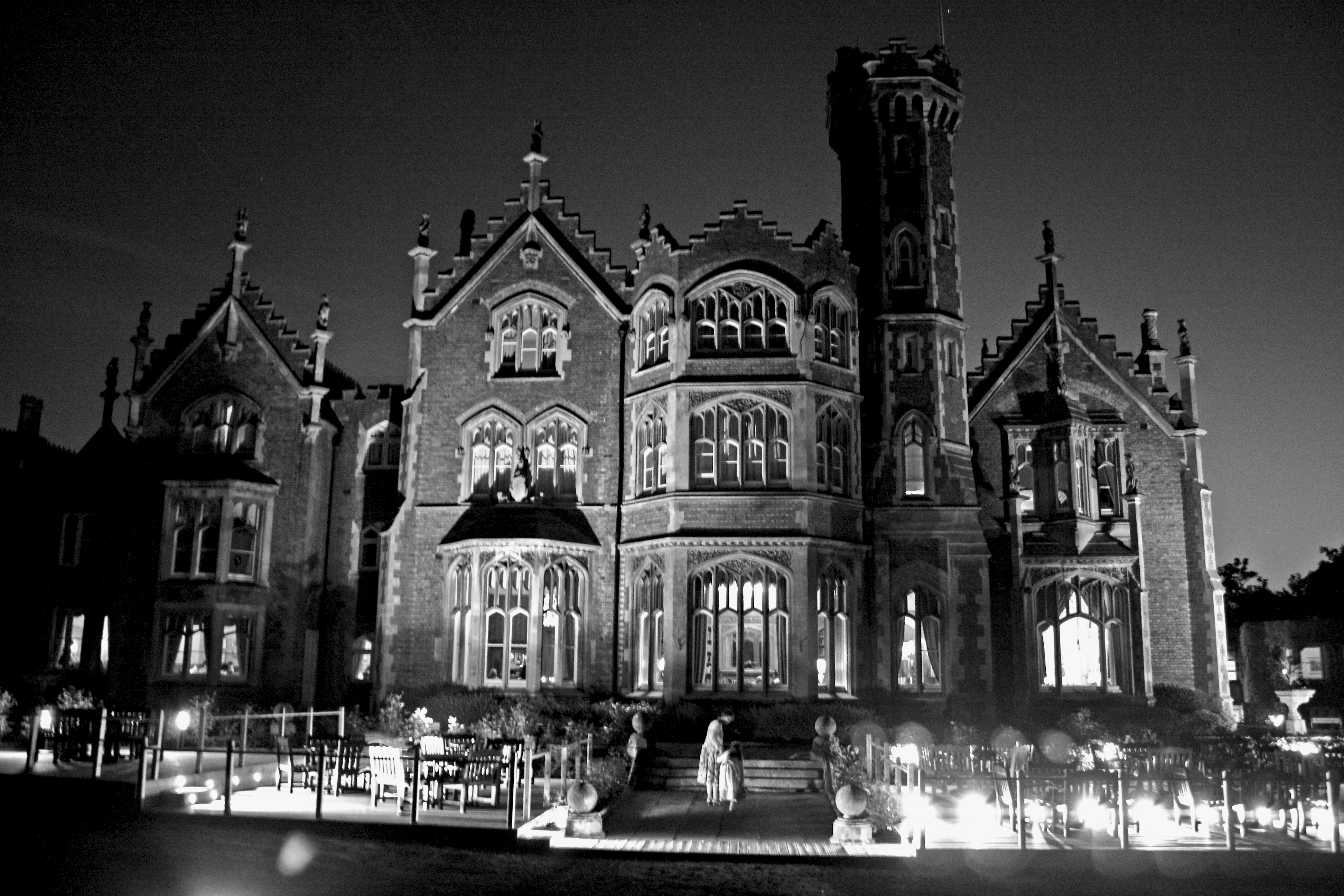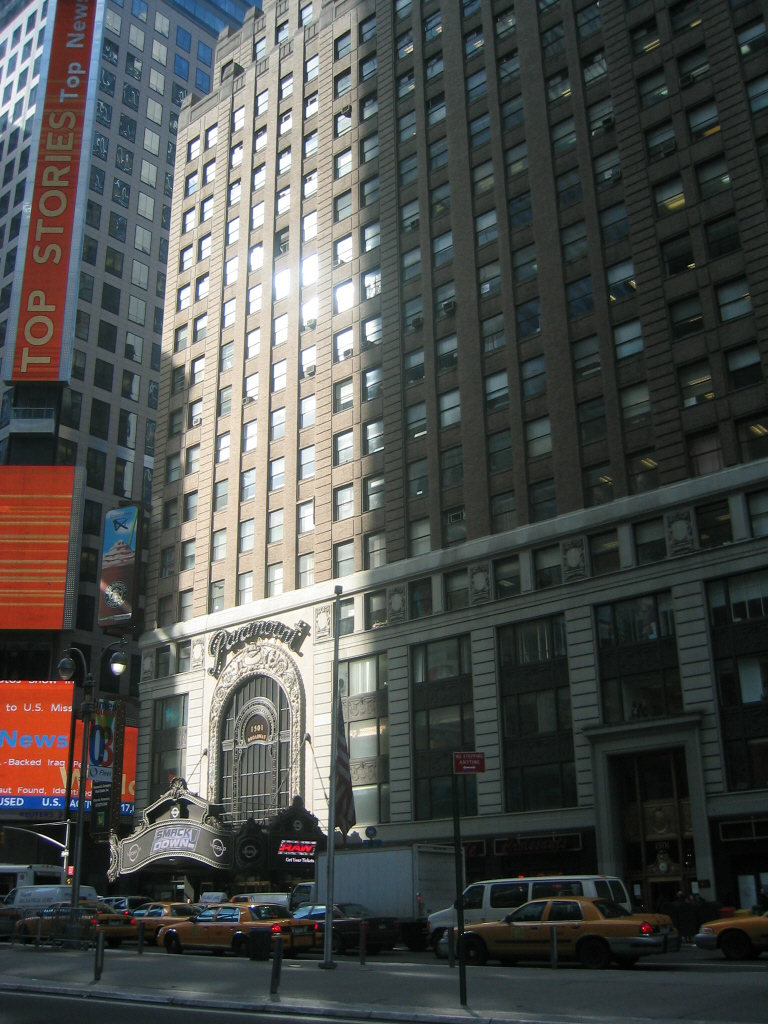|
Granada Theatre (Chicago)
The Granada Theatre was a 3,400–seat movie palace located at 6427-41 North Sheridan Road in the Rogers Park neighborhood of Chicago. It was constructed in 1926 for the Marks Brothers, who were major theatre operators in the U.S. Edward E. Eichenbaum was the principal designer for the architectural firm of Levy & Klein. Eichenbaum also designed the Marbro, Regal, and Century theatres. The Marks Brothers operated the theatre until 1934, when Balaban and Katz purchased the property. That firm and its successors—United Paramount Theatres, ABC Great States Theatres and Plitt Theatres—operated the facility until approximately 1978. From then until the mid-eighties, it was used sporadically for rock concerts and presented midnight showings of ''The Rocky Horror Picture Show'' for several years. Despite all attempts to save the theatre, Senior Life Styles Corporation purchased the property and demolished it in 1989-90 for a planned apartment/commercial structure ... [...More Info...] [...Related Items...] OR: [Wikipedia] [Google] [Baidu] |
Granada Theatre
Granada Theater may refer to: * Granada Theater (Emporia, Kansas) * Granada Theater (Kansas City, Kansas) * Granada Theater (Lawrence, Kansas) * Granada Theater (Dallas, Texas) * Granada Theater (The Dalles, Oregon) * Granada Theater (Wilmington, California) * Granada Theater (Santa Barbara, California) Granada Theatre may refer to: * Granada Theatre, original name of and now the smaller screen at the Liberty Theatre in Camas, Washington * Granada Theatre, Clapham Junction, London and others * Granada Theatre (Chicago) * Granada Theatre (Sherbrooke), Quebec * Granada Theatre (Racine, Wisconsin), designed by J. Mandor Matson Justave Mandor Matson (August 11, 1890 – May 23, 1963) was an architect in Racine, Wisconsin. He designed the United Laymen Bible Student Tabernacle in Racine County, Wisconsin and Wilmanor Apartments in Racine County (both listed on the National ... * Granada Theatres Ltd, former cinema company and forerunner of Granada plc See also * Granada Cinem ... [...More Info...] [...Related Items...] OR: [Wikipedia] [Google] [Baidu] |
Balaban And Katz
Balaban and Katz Theater Corporation, or B&K, was a theatre corporation which owned a chain of motion picture theaters in Chicago and surrounding areas. It was founded by Barney Balaban (later long-time President of Paramount Pictures), his six siblings, and Sam Katz. History Balaban and Katz Theatre corporation started in 1916 in Chicago by A. J. Balaban and his brother-in-law Sam Katz (1892-1961). It held its first meeting as a Delaware corporation on January 21, 1925. It merged with Lubliner and Trinz in July 1925. Famous Players-Lasky Corporation, forerunner of Paramount Pictures, bought a controlling interest in Balaban and Katz Corporation in 1926. It became a part of United Paramount Theatres in 1948 after Paramount was forced to sell off its theaters. The company also held at the Paramount Pictures-Theaters split in 1949: WBKB (TV), WIBK (FM), 25% of WSMB New Orleans, 50% of a company applying for an Atlanta AM license, 10% of another licensee apply for a license in ... [...More Info...] [...Related Items...] OR: [Wikipedia] [Google] [Baidu] |
Demolished Buildings And Structures In Chicago
Demolition (also known as razing, cartage, and wrecking) is the science and engineering in safely and efficiently tearing down of buildings and other artificial structures. Demolition contrasts with deconstruction, which involves taking a building apart while carefully preserving valuable elements for reuse purposes. For small buildings, such as houses, that are only two or three stories high, demolition is a rather simple process. The building is pulled down either manually or mechanically using large hydraulic equipment: elevated work platforms, cranes, excavators or bulldozers. Larger buildings may require the use of a wrecking ball, a heavy weight on a cable that is swung by a crane into the side of the buildings. Wrecking balls are especially effective against masonry, but are less easily controlled and often less efficient than other methods. Newer methods may use rotational hydraulic shears and silenced rock-breakers attached to excavators to cut or break through wo ... [...More Info...] [...Related Items...] OR: [Wikipedia] [Google] [Baidu] |
Demolished Theatres In Illinois
Demolition (also known as razing, cartage, and wrecking) is the science and engineering in safely and efficiently tearing down of buildings and other artificial structures. Demolition contrasts with deconstruction, which involves taking a building apart while carefully preserving valuable elements for reuse purposes. For small buildings, such as houses, that are only two or three stories high, demolition is a rather simple process. The building is pulled down either manually or mechanically using large hydraulic equipment: elevated work platforms, cranes, excavators or bulldozers. Larger buildings may require the use of a wrecking ball, a heavy weight on a cable that is swung by a crane into the side of the buildings. Wrecking balls are especially effective against masonry, but are less easily controlled and often less efficient than other methods. Newer methods may use rotational hydraulic shears and silenced rock-breakers attached to excavators to cut or break through wo ... [...More Info...] [...Related Items...] OR: [Wikipedia] [Google] [Baidu] |
Cinemas And Movie Theaters In Chicago
A movie theater (American English), cinema (British English), or cinema hall (Indian English), also known as a movie house, picture house, the movies, the pictures, picture theater, the silver screen, the big screen, or simply theater is a building that contains auditoria for viewing films (also called movies) for entertainment. Most, but not all, movie theaters are commercial operations catering to the general public, who attend by purchasing a ticket. The film is projected with a movie projector onto a large projection screen at the front of the auditorium while the dialogue, sounds, and music are played through a number of wall-mounted speakers. Since the 1970s, subwoofers have been used for low-pitched sounds. Since the 2010s, the majority of movie theaters have been equipped for Digital cinema#Digital projection, digital cinema projection, removing the need to create and transport a physical film stock#Intermediate and print stocks, film print on a heavy reel. A great ... [...More Info...] [...Related Items...] OR: [Wikipedia] [Google] [Baidu] |
Art Institute Of Chicago
The Art Institute of Chicago in Chicago's Grant Park, founded in 1879, is one of the oldest and largest art museums in the world. Recognized for its curatorial efforts and popularity among visitors, the museum hosts approximately 1.5 million people annually. Its collection, stewarded by 11 curatorial departments, is encyclopedic, and includes iconic works such as Georges Seurat's ''A Sunday on La Grande Jatte'', Pablo Picasso's ''The Old Guitarist'', Edward Hopper's '' Nighthawks'', and Grant Wood's '' American Gothic''. Its permanent collection of nearly 300,000 works of art is augmented by more than 30 special exhibitions mounted yearly that illuminate aspects of the collection and present cutting-edge curatorial and scientific research. As a research institution, the Art Institute also has a conservation and conservation science department, five conservation laboratories, and one of the largest art history and architecture libraries in the country—the Ryerson and B ... [...More Info...] [...Related Items...] OR: [Wikipedia] [Google] [Baidu] |
Ryerson & Burnham
The Ryerson & Burnham Libraries are the art and architecture research collection of the Art Institute of Chicago. The libraries cover all periods with extensive holdings in the areas of 18th-, 19th- and 20th-century architecture and 19th-century painting, prints, drawings, and decorative arts. A variety of materials important to scholarly research includes architects' diaries, correspondence, job files, photographs, sketchbooks, scrapbooks, articles, transcripts, and personal papers."The Burnham Library: A History", M. Woolever, Museum Studies, The Art Institute of Chicago, vol. 13, no. 2 History The Art Institute of Chicago's library collection commenced in 1879 as a service for students at the School of the Art Institute of Chicago and for members of the museum."The Book in the City Beautiful: Scholarly Collections at the Art Institute of Chicago," Jack Perry Brown, Museum Studies, The Art Institute of Chicago, vol. 34, no. 2) Over time, two libraries developed: the Ryerson Art ... [...More Info...] [...Related Items...] OR: [Wikipedia] [Google] [Baidu] |
Loyola University Chicago
Loyola University Chicago (Loyola or LUC) is a private Jesuit research university in Chicago, Illinois. Founded in 1870 by the Society of Jesus, Loyola is one of the largest Catholic The Catholic Church, also known as the Roman Catholic Church, is the largest Christian church, with 1.3 billion baptized Catholics worldwide . It is among the world's oldest and largest international institutions, and has played a ... universities in the United States. Its namesake is Saint Ignatius of Loyola. Loyola's professional schools include programs in medicine, nursing, and health sciences anchored by the Loyola University Medical Center. It is Carnegie Classification of Institutions of Higher Education, classified among "R2: Doctoral Universities – High research activity". Comprising thirteen colleges and schools, Loyola offers more than 80 undergraduate and 140 graduate/professional programs and enrolls approximately 17,000 students. Loyola has six campuses across the C ... [...More Info...] [...Related Items...] OR: [Wikipedia] [Google] [Baidu] |
The Rocky Horror Picture Show
''The Rocky Horror Picture Show'' is a 1975 musical comedy horror film by 20th Century Fox, produced by Lou Adler and Michael White and directed by Jim Sharman. The screenplay was written by Sharman and actor Richard O'Brien, who is also a member of the cast. The film is based on the 1973 musical stage production ''The Rocky Horror Show'', with music, book, and lyrics by O'Brien. The production is a tribute to the science fiction and horror B movies of the 1930s through to the early 1960s. Along with O'Brien, the film stars Tim Curry, Susan Sarandon, and Barry Bostwick and is narrated by Charles Gray (actor), Charles Gray, with cast members from the original Royal Court Theatre, Roxy Theatre (West Hollywood), Roxy Theatre, and Belasco Theatre productions, including Nell Campbell and Patricia Quinn (Northern Irish actress), Patricia Quinn. The story centres on a young engaged couple whose car breaks down in the rain near a castle, where they seek a telephone to call for h ... [...More Info...] [...Related Items...] OR: [Wikipedia] [Google] [Baidu] |
Plitt Theatres
Plitt Theatres was a major movie theater chain in the United States and went under a number of names, Publix Theaters Corporation, Paramount Publix Corporation, United Paramount Theatres, American Broadcasting-Paramount Theatres and ABC Theatres and operated a number of theater circuits under various names. The chain was originally the theater division of Paramount Pictures, incorporating a number of theater circuits acquired by Paramount, notably Balaban and Katz. Paramount was required to divest the theater chain as a result of the U.S. Supreme Court decision in the case ''United States v. Paramount Pictures, Inc.'' (1948). History The Publix Theaters Corporation was found in 1925 by the merger of the Balaban and Katz chain with Famous Players-Lasky Corporation theater chain. By 1930, the company owned 1,210 theaters in the US and Canada when the company changed its name to Paramount Publix Corporation. In early February 1933, Paramount-Publix was placed in equity receivership ... [...More Info...] [...Related Items...] OR: [Wikipedia] [Google] [Baidu] |
Century Theatre (Chicago)
Century Theatre may refer to: *Century Theatre (Buffalo, New York), U.S. * Century Theatre (Detroit), U.S. *Century Theatre (Central Park West), a demolished theater on the Upper West Side, Manhattan, New York, U.S. * Century Theatre (Toronto), Canada, now Danforth Music Hall * Century Theatre (mobile theatre), now at Snibston, Leicestershire, England * Century Theatres, an American movie theatre chain *Century Theatre, now Sony Hall, a former Broadway theater in the Theater District, Manhattan, New York, U.S. *Century Theatre, now Village East by Angelika Village East by Angelika (originally the Louis N. Jaffe Art Theatre, also Village East, and formerly known by several other names) is a movie theater at 189 Second Avenue, on the corner with 12th Street, in the East Village of Manhattan in N ..., a former off-Broadway theater in the East Village, Manhattan, New York, U.S. See also * * New Century Theatre, a former Broadway theatre in Manhattan, New York City, U.S. *'' Th ... [...More Info...] [...Related Items...] OR: [Wikipedia] [Google] [Baidu] |
Historic American Buildings Survey
Heritage Documentation Programs (HDP) is a division of the U.S. National Park Service (NPS) responsible for administering the Historic American Buildings Survey (HABS), Historic American Engineering Record (HAER), and Historic American Landscapes Survey (HALS). These programs were established to document historic places in the United States. Records consist of measured drawings, archival photographs, and written reports, and are archived in the Prints and Photographs Division of the Library of Congress. Historic American Buildings Survey In 1933, NPS established the Historic American Buildings Survey following a proposal by Charles E. Peterson, a young landscape architect in the agency. It was founded as a constructive make-work program for architects, draftsmen and photographers left jobless by the Great Depression. It was supported through the Historic Sites Act of 1935. Guided by field instructions from Washington, D.C., the first HABS recorders were tasked with documen ... [...More Info...] [...Related Items...] OR: [Wikipedia] [Google] [Baidu] |





_Team.jpg)